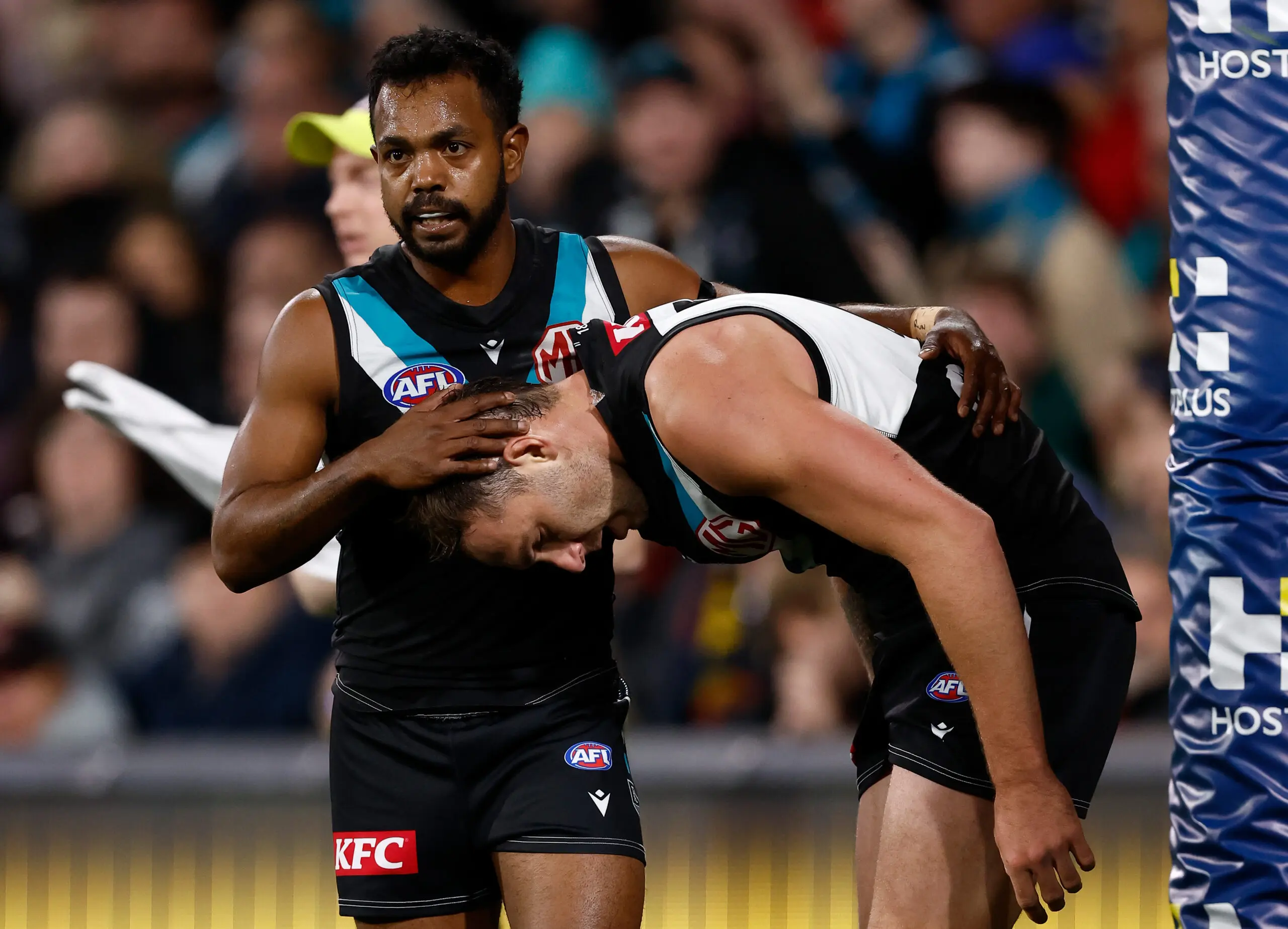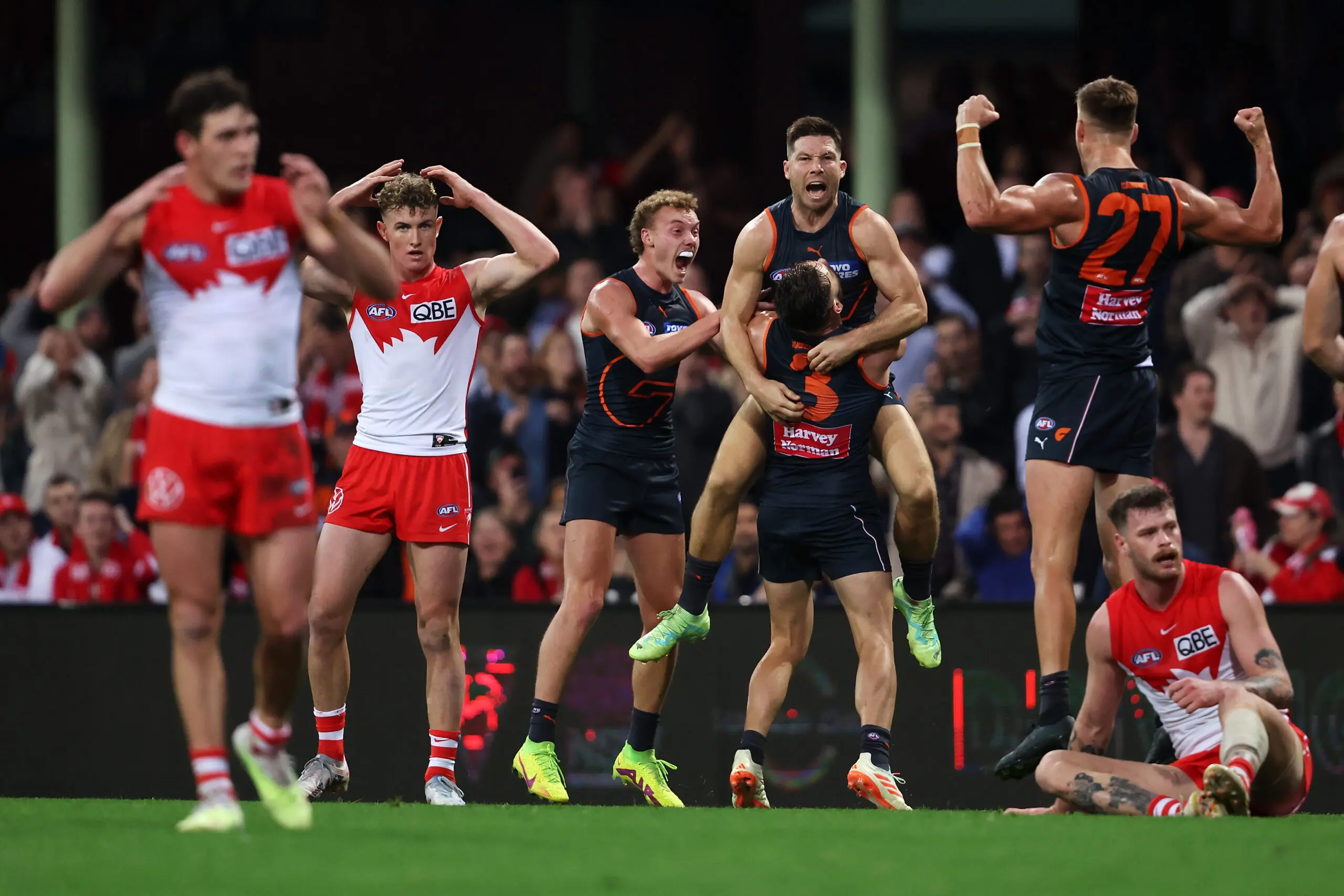Ten are gone, eight remain.
After six months of home and away football, the final eight sides have been determined and the road to a premiership fairytale begins. In a season like no other, every side remaining holds a genuine shot at winning it all. The closest AFL season in history, the opening week of finals will be tough to pick, let alone a premier.
Each club has their own strengths and weaknesses however, and through statistical analysis, these can be identified as key factors to maintain, or improve on, in order to secure a week-one finals victory.
So, let's dive into what stat matters most for your AFL team in the first week of September.
Port Adelaide vs Geelong - tackles
It's a well-known fact the pressure goes up a notch in finals football, and a key indicator of that is tackling. Applying defensive pressure is not just the key for Thursday night's clash, but will be a predominant metric in all other games in September.
However, tackling is set to be central for Port Adelaide and Geelong's qualifying final.
The Power rank first for tackles per game this season, averaging 65.5 per game. Geelong aren't too far behind though, ranked third with an average of 64.7.
The Cats' tackling machines include Tom Atkins, who averages 6.6 per game, and Shaun Mannagh, who averages 4.6 as a small forward.
Willem Drew averages Port Adelaide's most tackles with 6.3 per game, whilst ruckman Jordon Sweet averages 5.2 in his career-best year.
Port Adelaide are notably fine-tuned for finals pressure, with an average of 73.4 in their last five games. Contrastingly, the Cats average just 59.8 since Round 20.
In their Round 9 encounter, Geelong recorded just three more tackles than the Power in a shock six-point home loss. However, Port Adelaide recorded seven more tackles inside 50, highlighting their full-ground pressure.
Willie Rioli averages nearly two tackles inside 50 per game, whilst Jed McEntee records 1.4 on average. In Round 9, Rioli recorded five in a four-goal display, as McEntee made three tackles inside 50.
Geelong are a substantially weaker tackling team in their forward half, averaging just 11 inside 50 for the season, ranked ninth. However, in their last five games they rank second, with players such as Mannagh and Shannon Neale increasing their tackling output.
Both teams will be upping the ante even further for finals, despite their already league-leading pressure. Whichever side can maintain their pressure for four quarters, however, will determine who walks away with a home preliminary final.

Western Bulldogs vs Hawthorn - inside 50s and efficiency inside 50
The two in-form teams of the competition, it's unsurprising that the Bulldogs and Hawks have led the league for inside 50s since Round 20.
Averaging 64.4 per game, the Bulldogs inside 50 entries have been persistent, allowing for the most shots on goal per game in the competition (29). However, what could let the Bulldogs down is the quality of their forward 50 entries, as well as their goalkicking accuracy.
From their 64.4 inside 50s (ranked first), the Bulldogs average just 13.4 marks inside 50 (ranked fifth). Whilst their marks inside 50 still rank highly amongst the competition, their rate of 20.8% sits the Bulldogs 12th (rate determined by marks inside 50 per inside 50 entry).
Hawthorn are comparatively much more efficient with their inside 50 entries. Since Round 20, Hawthorn's average of 61 inside 50s per game has led to 15.4 marks, a rate of 25.2% (ranked fifth).
Their strength overhead inside 50 could be negated on Friday night however, as the Bulldogs average an AFL-best 17.4 intercept marks in their last five matches.
Although, that may not matter if the Bulldogs can't kick straight. The Bulldogs may average the most shots on goal, but they regularly fail to capitalise on them. The Dogs' goalkicking accuracy since Round 20 is 41.2%, only better than wooden spooners Richmond. For the year, they only rank slightly higher, 14th for 46.8%.
The Dogs have seen wayward shooting from a number of players, such as Jamarra Ugle-Hagan's 2.6 against Melbourne, and Sam Darcy's 1.5 against Adelaide.
Opposingly, Hawthorn's accuracy in the last five weeks is near competition-leading. The Hawks ran third since Round 20 with a goalkicking percentage of 56.1%.
Presenting as one of the best finals fixtures this year, Hawthorn will go in as slight underdogs against the Sons of the West. However, an inaccurate goalkicking display or second-rate inside 50 entries from the Dogs could give the Hawks a sniff at a semi-final.

Sydney vs GWS - scores from turnover
Sydney's dominant first half of the season was illustrated by capitalising off turnovers. Although their form dipped in the latter stages of the season, the Swans are still crowned as the AFL's leading scorer off turnovers, averaging 55.8 points per game.
The Swans can pounce on sloppy opposition possession anywhere on the field too, with 47.7 points originating in the forward half and 37.2 originating down the defensive end (both ranked first in the league).
These are concerning numbers for GWS, who average the fifth most turnovers in the AFL (67.7). While the Giants play a risky brand of football, in a counterattacking surge titled the 'Orange Tsunami', there may not be as much margin for error in a high-pressure finals environment.
What the Giants can take comfort in is their disposal efficiency. Even though they record high turnover figures, it isn't generally from skill error, rather from taking the game on. GWS average a disposal efficiency of 73.2%, ranked sixth in the league.
If the Giants are to win against Sydney, a team that has handed them two losses already in 2024, they'll need to increase their own ability to score off turnover. The Swans average 67.9 turnovers per game (fourth-highest in the AFL), however the Giants only average 48.8 points off turnover (ranked ninth).
Perhaps Sydney's midfield unit's potency in attack has contributed to their strong scores off turnover. Isaac Heeney, Chad Warner and Errol Gulden all average over 7.5 score involvements. Toby Greene and Brent Daniels (6.7 and 6.2 per game) average the most for GWS though, as Josh Kelly (6.1 per game) is the Giants' highest-ranked midfielder.
Despite a glittering 3-0 finals record against the Swans, GWS' high-speed attack could face consequences under finals pressure. If the turnovers begin to add up, it might be Sydney's game to lose.

Brisbane vs Carlton - clearances
Ranked first and second for clearances in 2024, Brisbane and Carlton's elimination final will be a midfield battle for the ages. Averaging 40.3 and 39.8 clearances respectively, both the Lions and Blues evidently will rely on a strong showing from their stars to stay alive in September.
Brisbane head into the Gabba clash with far greater form than the Blues. The Lions average 43 clearances from their last five games, ranked first, whilst Carlton average 37.8 clearances, ranked ninth, amidst a 1-4 record since Round 20.
Patrick Cripps has still led the way however, averaging an AFL-best 8.2 clearances per game. Sam Walsh and George Hewett's numbers have slightly decreased since Round 20, but the inclusion of Sam Docherty gives the Blues a point of difference that could potentially positively impact Walsh and Hewett's roles.
Lachie Neale doesn't rank too far behind Cripps overall, averaging 7.5 clearances this season. Ruckmen Marc Pittonet and Oscar McInerney average nearly identical clearances too (5.8 and 5.5 respectively), although Pittonet may make way for Tom De Koning should he pass his fitness test, giving McInerney the edge in his position.
In their Opening Round clash, Brisbane only pipped the clearance count by one in the one-point loss. However, an out-of-form Carlton squad, amongst a host of injured players, can give Brisbane confidence that Carlton's influence in the midfield can be limited.
With all of Charlie Curnow, De Koning and Harry McKay potentially returning from injuries, the Blues may rely on Cripps and co. to set the tone, easing the returnees into action. Hence, the clearance count will be a key watch for Carlton this Saturday night.






